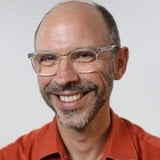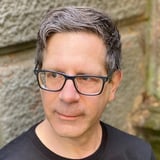Summary
As product designers and product managers, working with each other can be confusing, frustrating, and sometimes causes conflict, especially as corporate expectations evolve and our roles increasingly overlap. How do we each play to our strengths, and still find a way to meet at the focus of our product; our users? In this talk, we will learn how our disciplines are both the same and differ, and how to become trusted partners towards our common goals, at any stage of our career.
Key Insights
-
•
The transition from waterfall to agile shifted focus from outputs to outcomes, profoundly changing how designers collaborate with product managers.
-
•
Early in her career, Asia experienced design as a constrained role, limited to polished deliverables and strict chain of command.
-
•
Product management centers on business value, metrics, and prioritization, involving deep work long before design involvement.
-
•
Design and product management overlap in research, user understanding, and vision, but maintain distinct responsibilities and skills.
-
•
Common conflicts include late involvement of designers, limited decision-making power, and balancing subjective design goals with objective business needs.
-
•
Involving designers early in sprint planning and stakeholder meetings improves design estimates and scope clarity.
-
•
Establishing team rituals like kickoffs, sprint planning, retrospectives, and bonding activities enhances alignment and morale, especially remotely.
-
•
Protecting designers' time and insisting on meeting agendas help maintain focus and enable effective iteration.
-
•
Documenting design decisions in multiple linked tools (like Figma and Jira) fosters transparency and cross-functional understanding.
-
•
Assuming positive intent and practicing curiosity over ego cultivate healthier collaboration between designers and product managers.
Notable Quotes
"Project management was focused on outputs, assuming the correct feature was already defined."
"At General Assembly, I learned that product management is focused more on outcomes and iterative discovery."
"Design is not just aesthetics; it’s about what the product feels like, sounds like, and how it differentiates in the market."
"Accessibility isn’t just a checklist; it changes moment to moment for any individual."
"Product managers mean business — they have their hands in multiple pots long before designers join the team."
"Designers are often seen as bottlenecks because our work is harder to estimate and track than engineering’s."
"Collaborate and involve design early and often to better align on user goals and reduce friction."
"Building rapport and rituals helped our remote team foster camaraderie and trust."
"I learned to be relentless about prioritization and to hone in on specific details and use cases."
"Assume positive intent, practice a service mindset, and curiosity over ego — remember we’re all in this together."
Or choose a question:
















More Videos

"Design thinking is for everybody. It’s collaborative, inclusive, and cross-disciplinary."
Doug PowellClosing Keynote: Design at Scale
November 8, 2018

"Middle schoolers might ask you tough questions about release forms and how their data will be used."
Mila Kuznetsova Lucy DentonHow Lessons Learned from Our Youngest Users Can Help Us Evolve our Practices
March 9, 2022

"Evan actually spent less than 15 minutes on the essay, and instead of working on homework, he was writing a letter to his significant other back home in Detroit."
Sarah GallimoreInspire Progress with Artifacts from the Future
November 18, 2022

"Operations tends to be something companies only think about when they are scaling rapidly, but investing early is essential."
Lada Gorlenko Sharbani Dhar Sébastien Malo Rob Mitzel Ivana Ng Michal Anne RogondinoTheme 1: Discussion
January 8, 2024

"Who deals with chaos, ambiguity, and disruption best? It’s us, design operations humans."
Alnie FigueroaThe Future of Design Operations: Transforming Our Craft
September 10, 2025

"Research is not as easy as putting on a shoe and just doing it; it requires careful consideration and alignment with imperatives."
Landon BarnesAre My Research Findings Actually Meaningful?
March 10, 2022

"I thrive on learning about how people overcome obstacles."
Emily EagleCan't Rewind: Radio and Retail
June 3, 2019

"We neglected our power users during the responsive, one-size-fits-all strategy, and it really hurt us."
Malini RaoLessons Learned from a 4-year Product Re-platforming Journey
June 9, 2021

"Product managers mean business — they have their hands in multiple pots long before designers join the team."
Asia HoePartnering with Product: A Journey from Junior to Senior Design
November 29, 2023
Latest Books All books
Dig deeper with the Rosenbot
How should C-suite executives approach AI introduction differently from traditional software rollouts?
What signs indicate an organization is ready to experiment with coordinated collaboration approaches?
How does the second edition of the service design book address the relationship between service design and digital products?
















